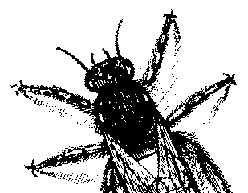February 1999The God That Failed...Are Oil Change, WinDoctor and SystemWizard An Evolutionary Dead End?
CyberMedia, the purported category leader with First Aid and Oil Change, recently sold out to Network Associates after two years of deep red ink and admittedly disappointing sales. Meanwhile, TuneUp, CyberMedia's principal competitor for the auto garage metaphor, went through Chapter 11 bankruptcy and was swallowed by Quarterdeck, which in turn was swallowed by Symantec. Last month Symantec quietly killed TuneUp and folded a few of its features into Norton Web Services. SystemSoft, purveyor of SystemWizard, has focused on the OEM rather than the retail market, but the results have been the same: lackluster sales and deep losses, which in SystemSoft's case have produced a negative 152 percent return on equity. Even so, the appeal of automatic fix-it programs for Windows remains strong: Windows frequently get broken, and who wants to spend their weekend downloading new driver files and manually tweaking their Registry? No one! So what's the problem? WELL, FOR ONE thing, the automatic Windows fix-it programs on the market today are pretty rudimentary. From our experience licensing the BugNet Database to both TuneUp and SystemSoft, we discovered that automatic fix-it programs simply don't have the tools to fix most of the PC problems out there. The fix-its do a fine job of checking the Registry, shortcuts and associations because the rules are known. But when they venture into the vast terrain outside the Registry, they meet a fate like the space invaders in Starship Troopers. Jim Aspinwall, former TuneUp product manager at Quarterdeck, notes that "neither CyberMedia First Aid, Quarterdeck Fix-It/RealHelp nor Symantec WinDoctor have a reasonable expert system/solution base working behind them on non-Registry items." This leaves some gaping holes in the automatic fix-it programs' abilities. "None of them, for instance, detect or give accurate information about what to do if an address or IRQ in hardware is wrong," says Aspinwall, who just launched a new online support service at www.pcservicestation.com. Similar limitations sabotage what should be a real strength of automatic fix-it programs: the ability to effortlessly download and install new drivers and patches. Problem is, the popular Windows automatic fix-it utilities on the market today aren't smart enough to do an entirely trustworthy job. None have the ability to determine:
The result is that the fix-it programs essentially pimp patches, enabling users to promiscuously install every new hot-fix and driver that comes down the pike. This, of course, is a very bad idea. The BugNet Database is studded with sad situations where upgrading one piece of software causes problems with other software and/or hardware. Among the recent examples:
In each of these cases, the solution is to postpone upgrading until sometime later when the problem has been fixed or additional functionality makes it worthwhile. Automatic fix-it programs are totally blind to problems like these because they lack up-to-the-minute information about cross-vendor conflicts. SHEER COMPLEXITY, however, is the biggest obstacle facing the surviving automatic Windows fix-it programs. Peter Norton's task two decades ago with the Norton Utilities was child's play compared to what Symantec and Network Associates are attempting today. The number of lines of code, the number of possible variations in hardware and software setup, the number of tasks and PC peripherals to perform them have all increased exponentially. One might hope that in time the Windows fix-it genre would mature and a clearly capable standard bearer would emerge, but right now it looks like the fix-its are losing the race to complexity. I mean, if Microsoft can't get this stuff right (as in the last two Service Releases for its popular Office Suite, which had to be withdrawn because of bugs), how can a second tier software maker even HOPE to have a chance? In fact, the most promising tool in the automatic Windows fix-it genre has come from an entirely different direction: GoBack, http://www.goback.com/, allows you to back out of problems and restore your machine to the condition it was in before you upgraded to Internet Explorer 4, or whatever caused you grief. GoBack is a truly innovative idea (how long until it's a feature in Windows?) with a bright future for at least the next six months. The future of the traditional fix-it programs is much cloudier. Perhaps the whole genre will turn out to be an evolutionary dead end. This much is clear -- there are no painless shortcuts you can sleep through. Now more than ever, knowledge is power. -- Bruce Brown
© BugNet material copyright 1994-1999 by BugNet. This historic replica of BugNet from the period 1994-1999 BF Communications Inc. Website by Running Dog
|
|||||





 BORN
WITH such brash promise just a few years ago,
the entire automatic Windows fix-it software category is
now struggling to survive.
BORN
WITH such brash promise just a few years ago,
the entire automatic Windows fix-it software category is
now struggling to survive. 
